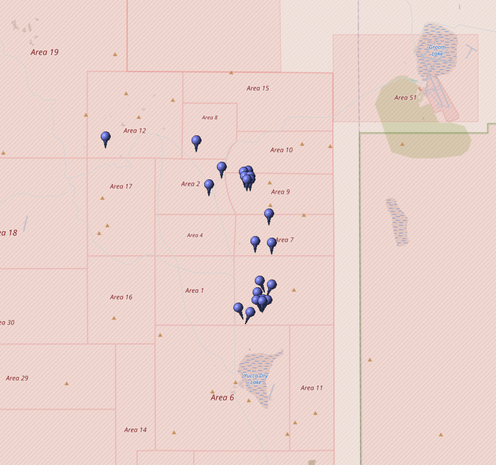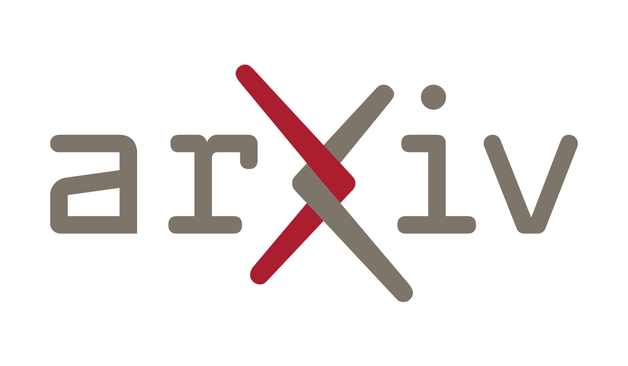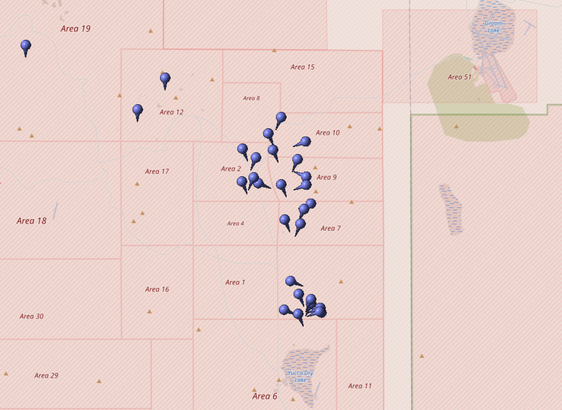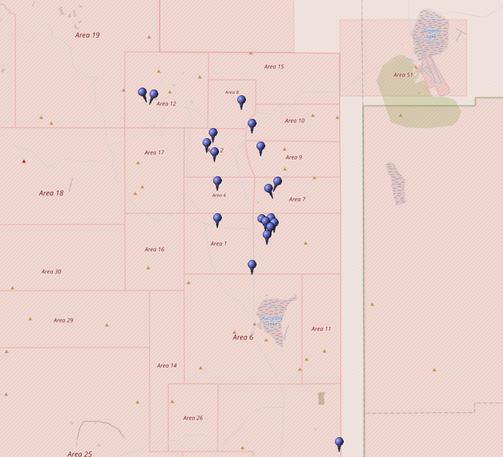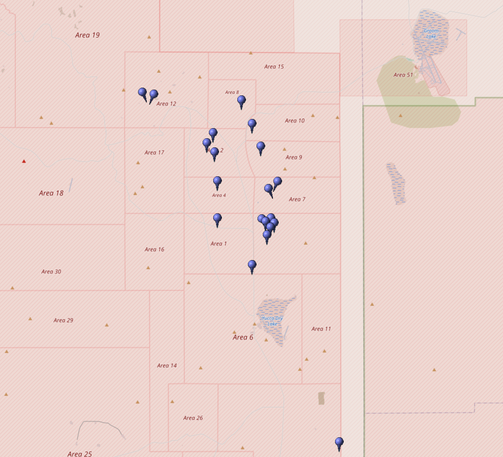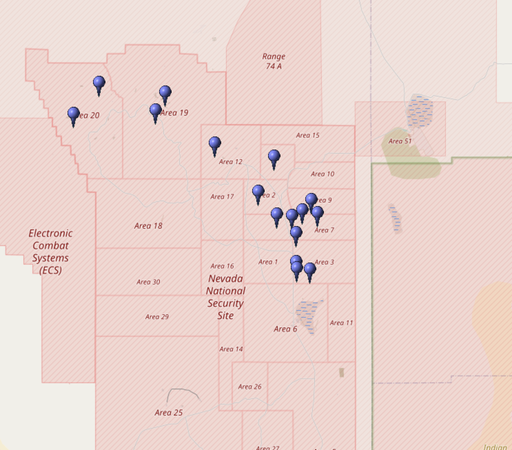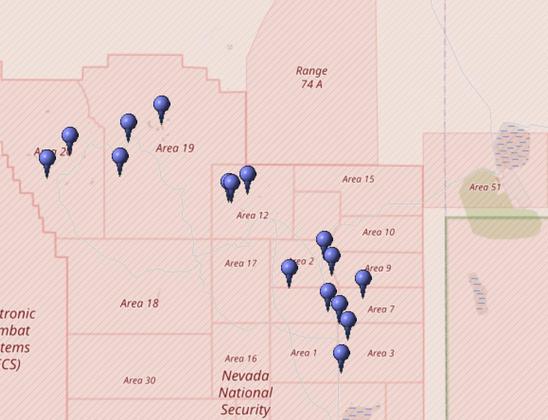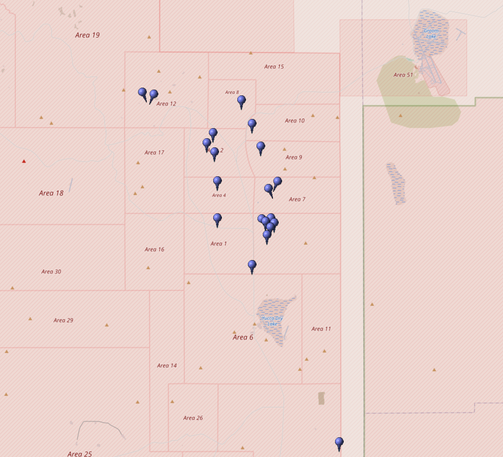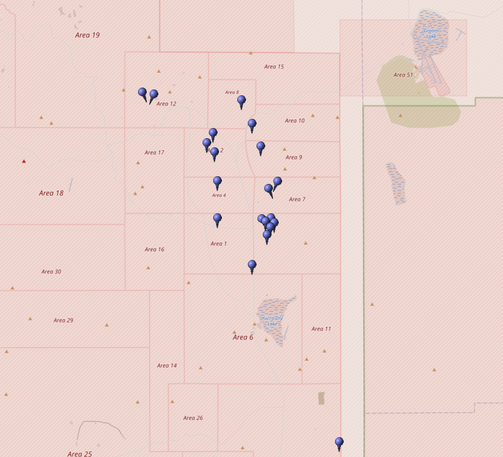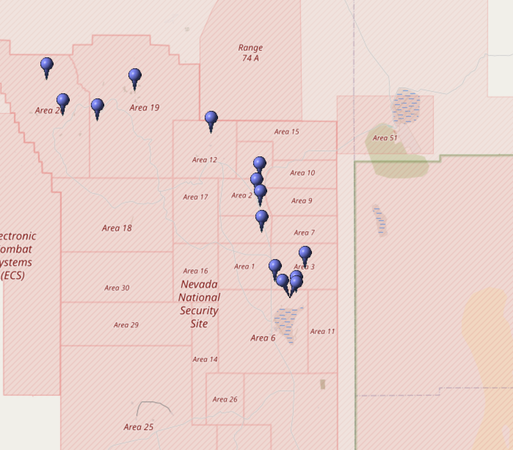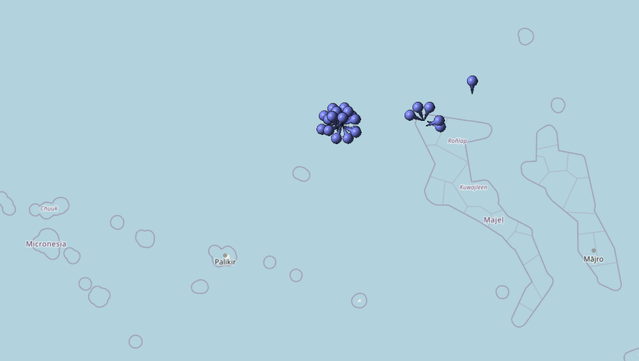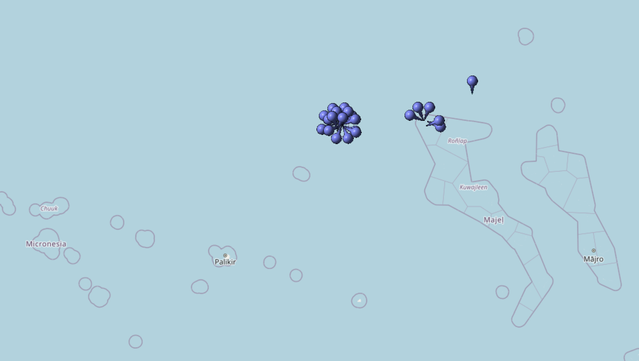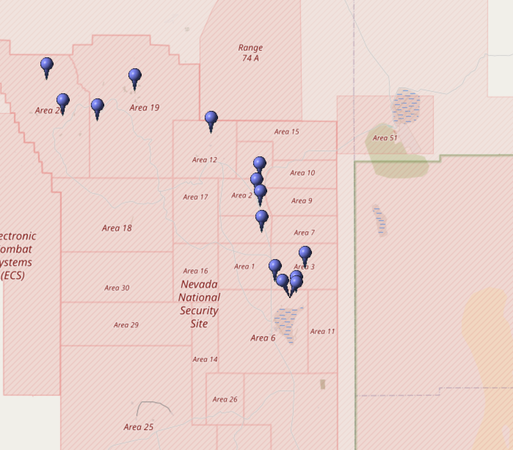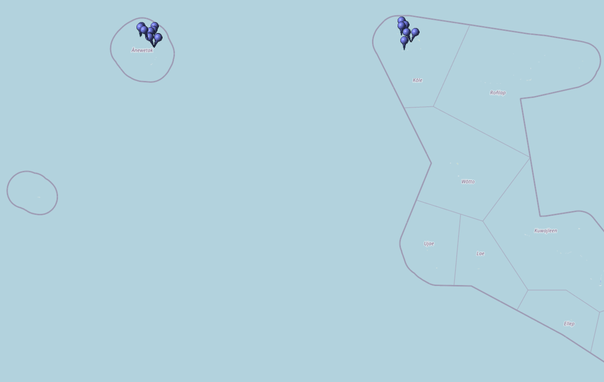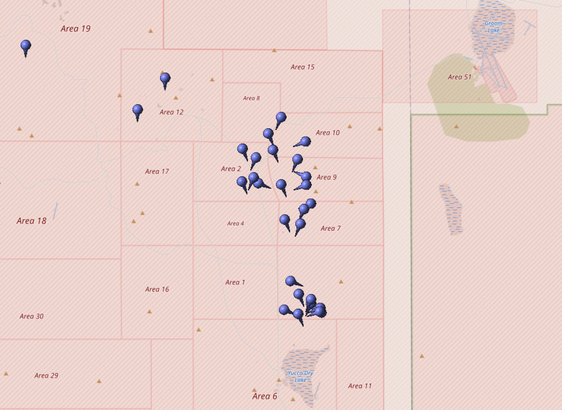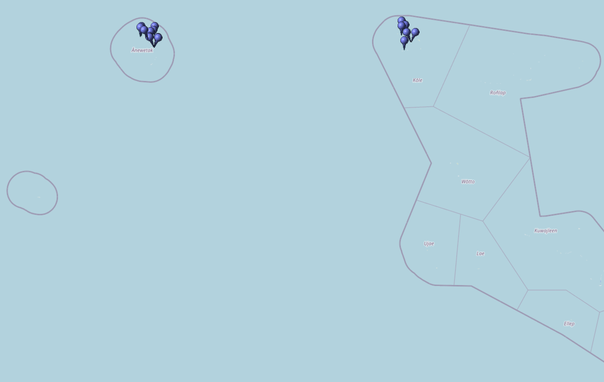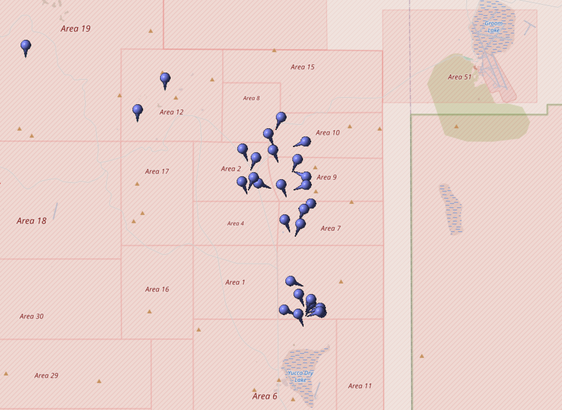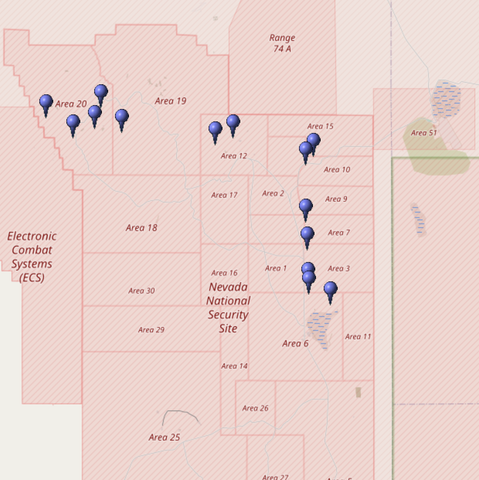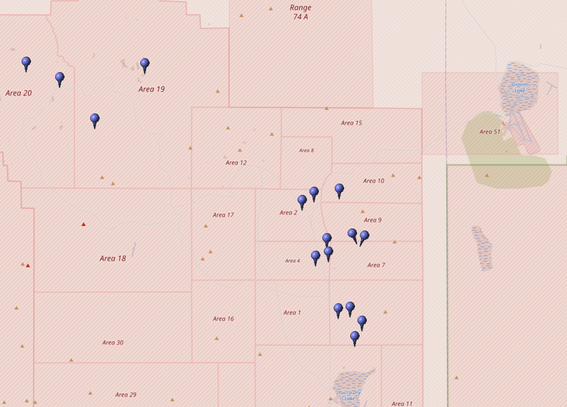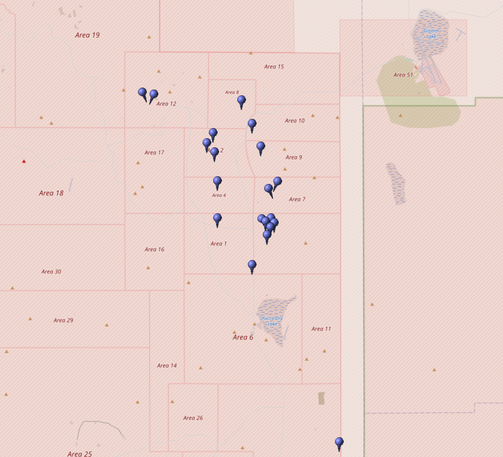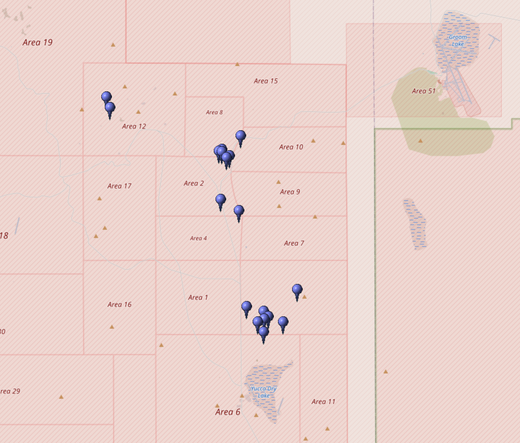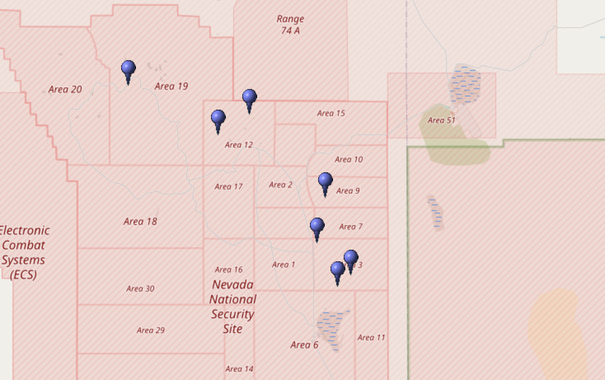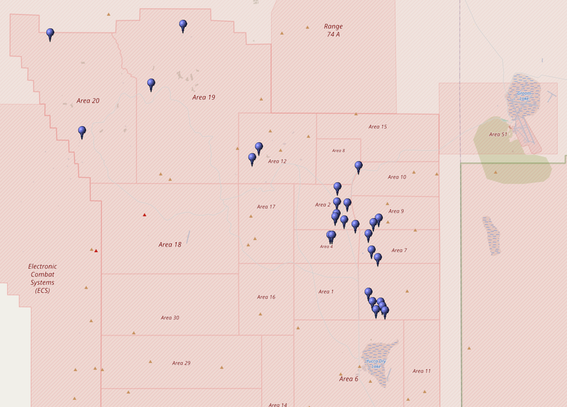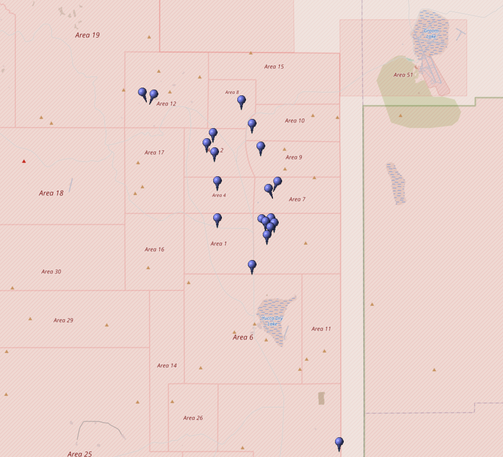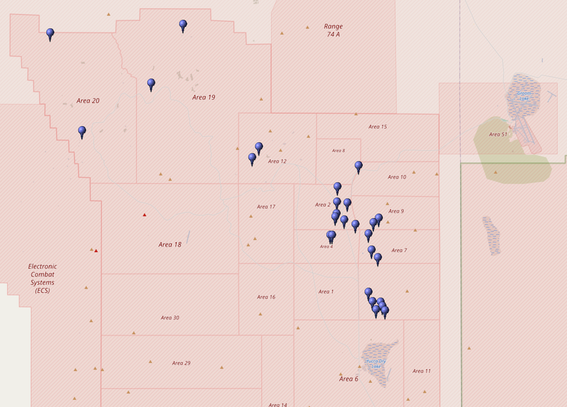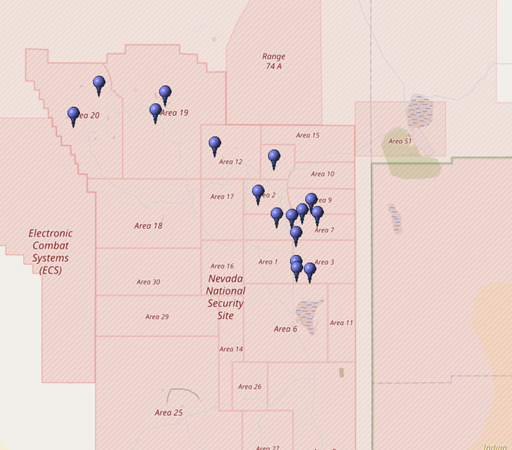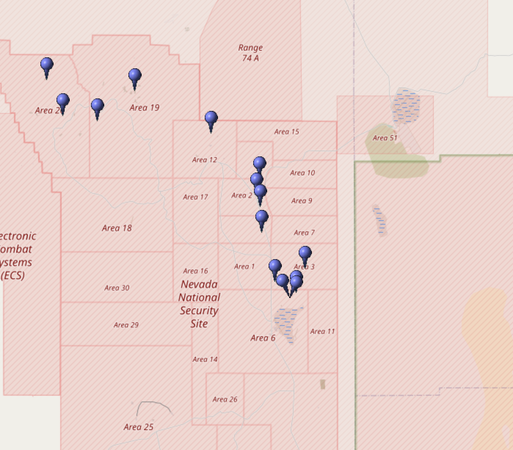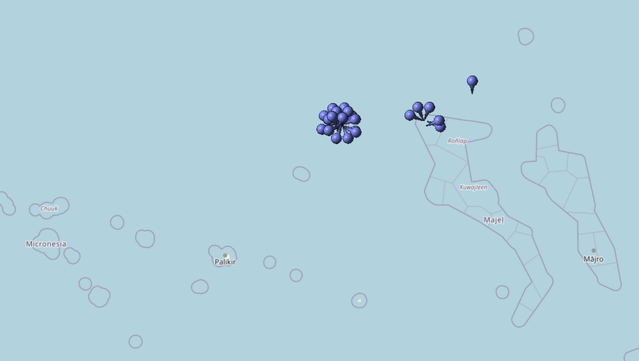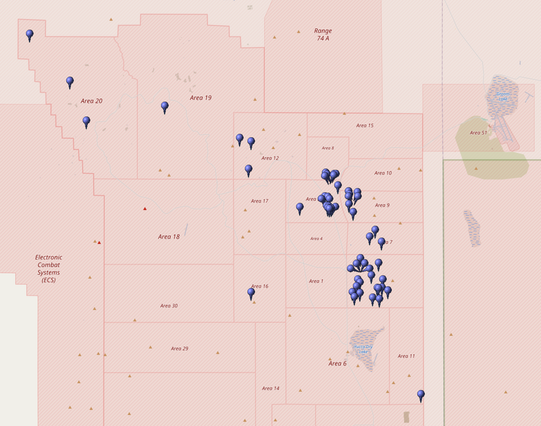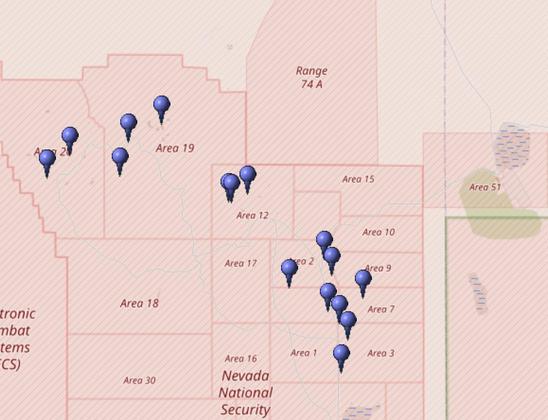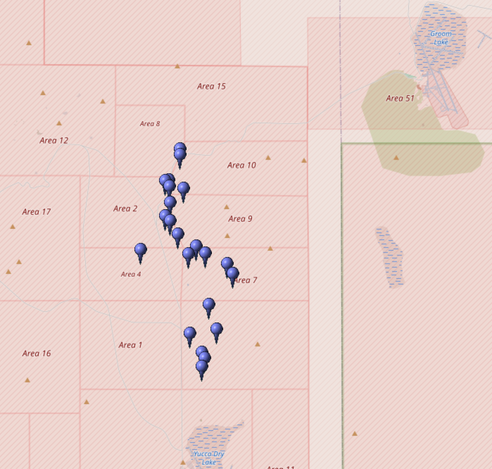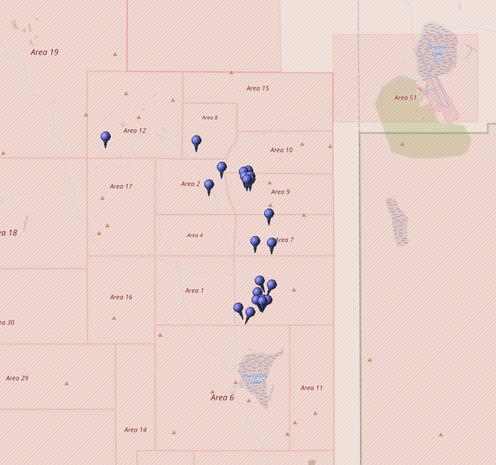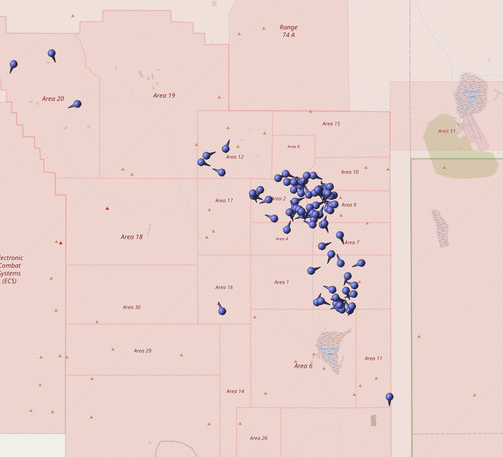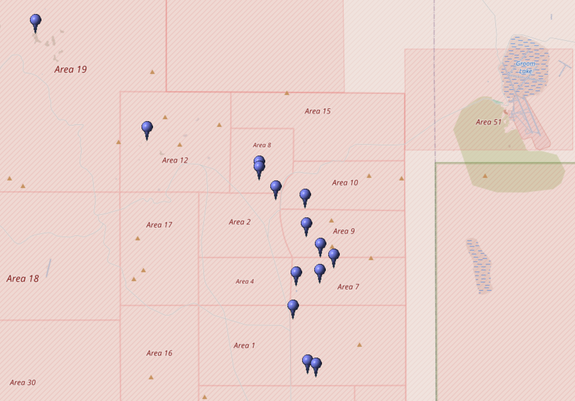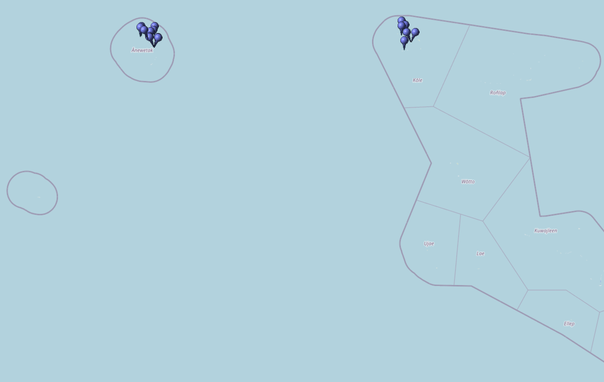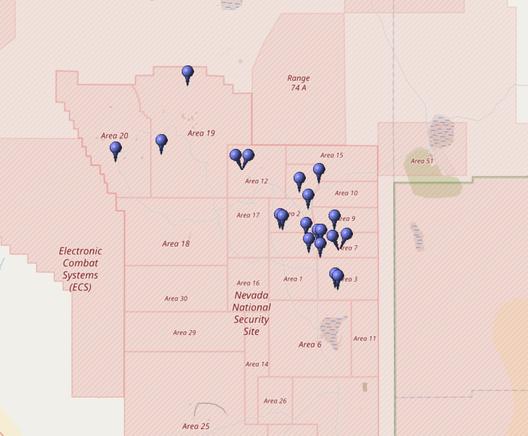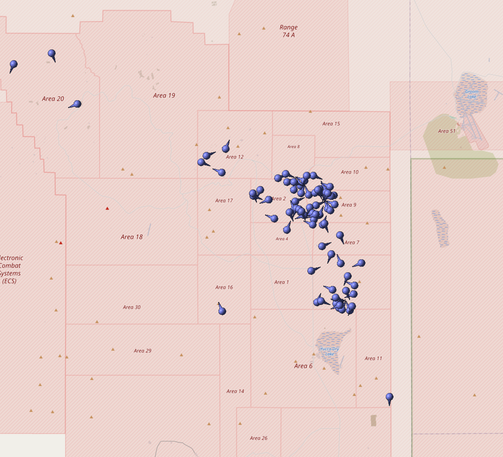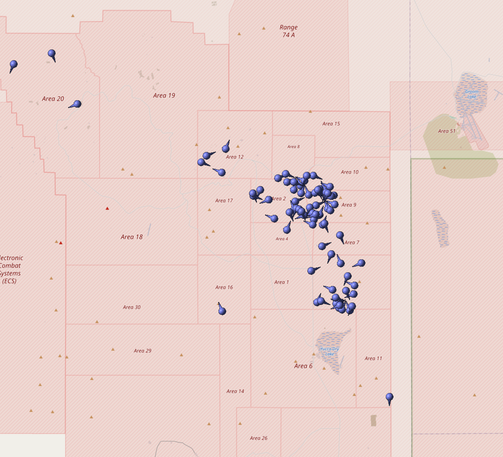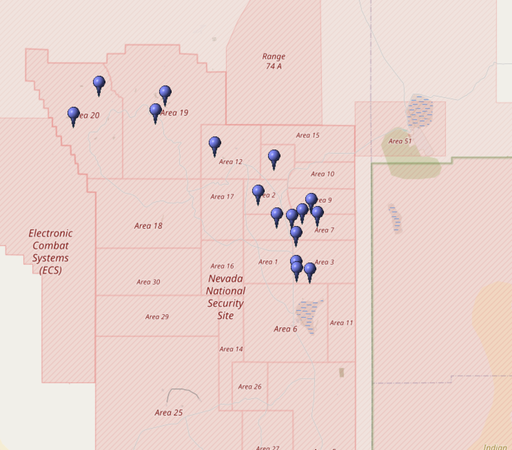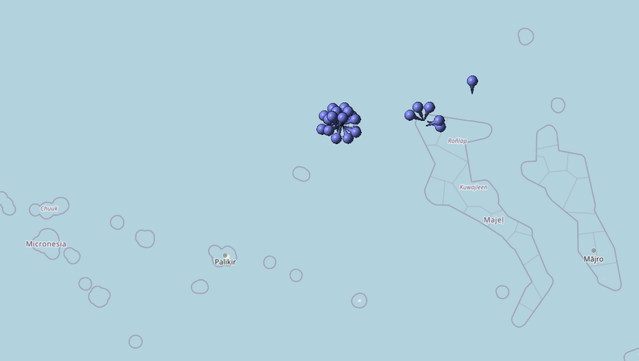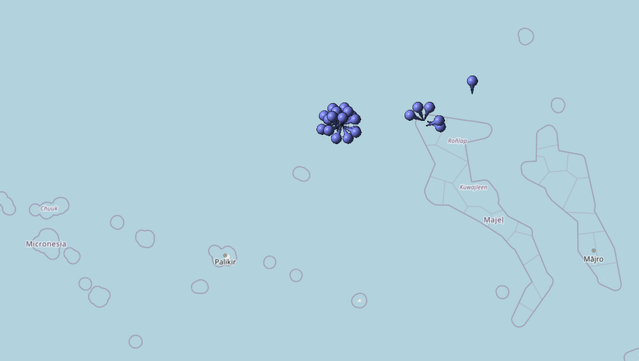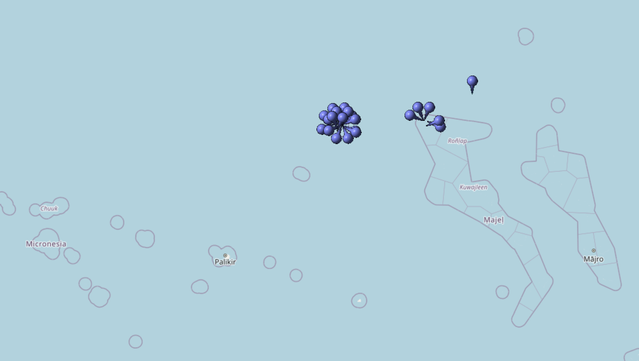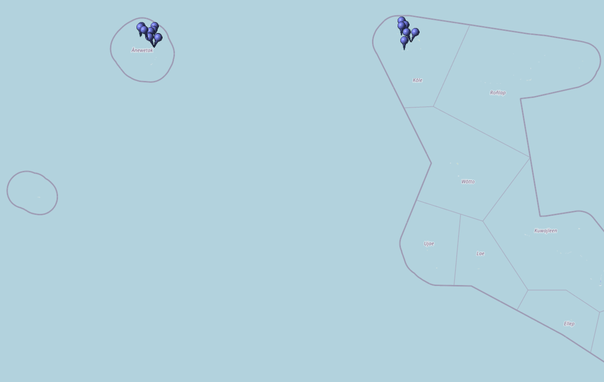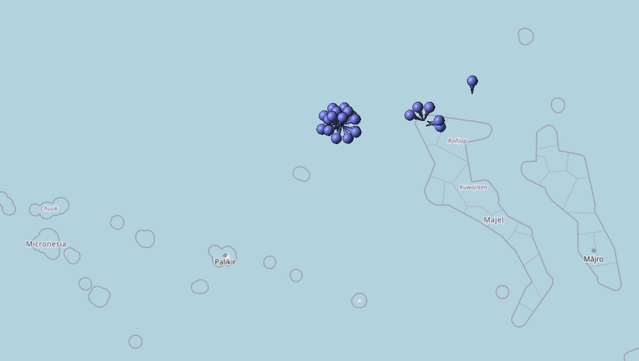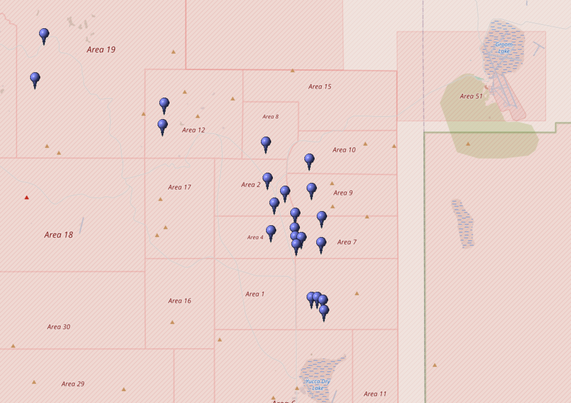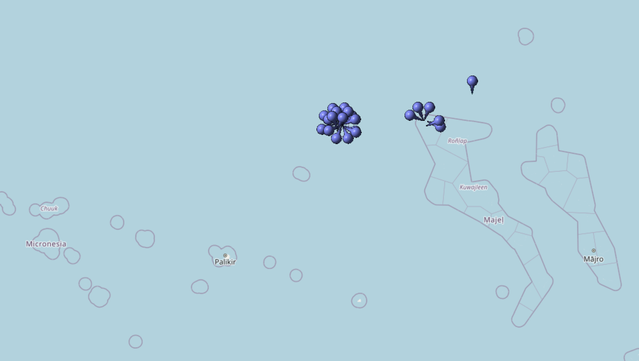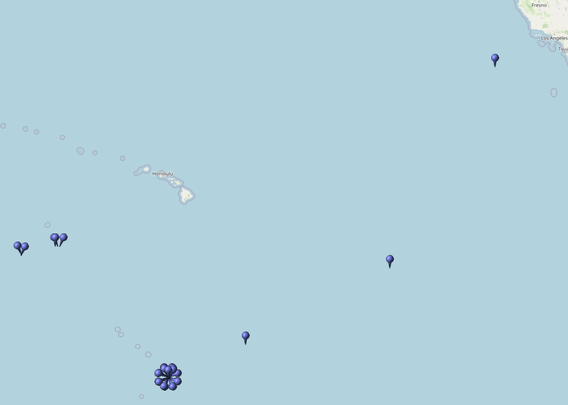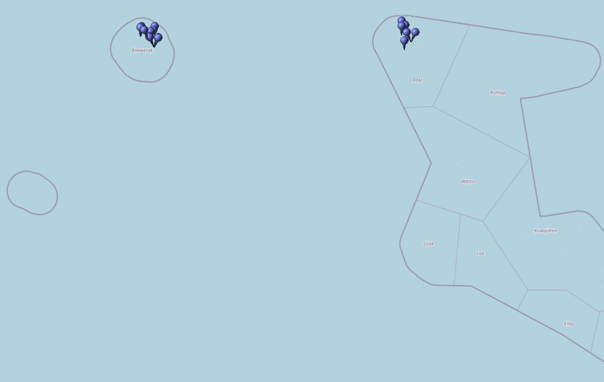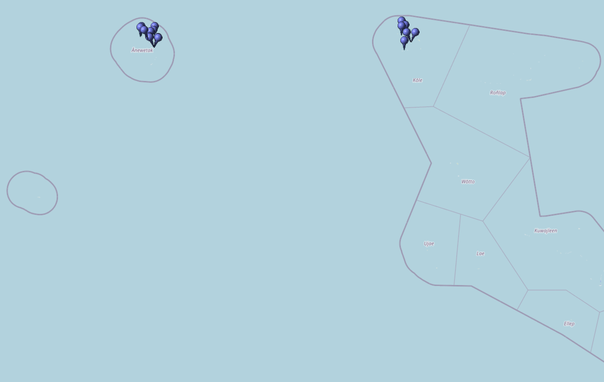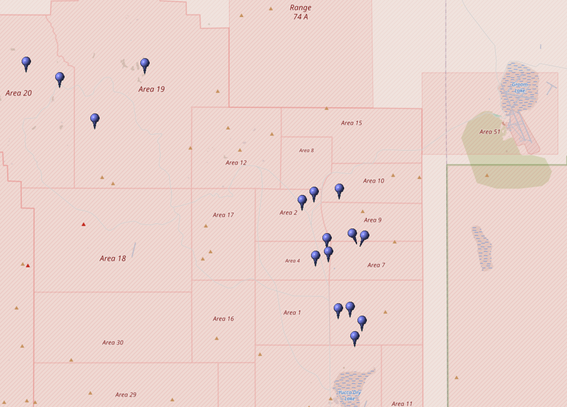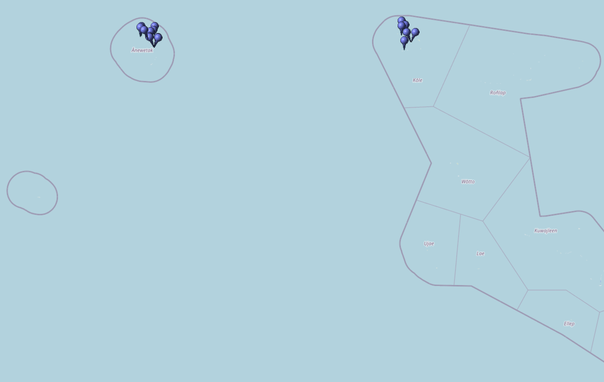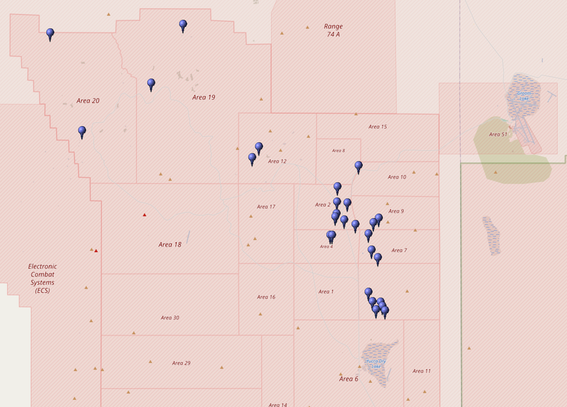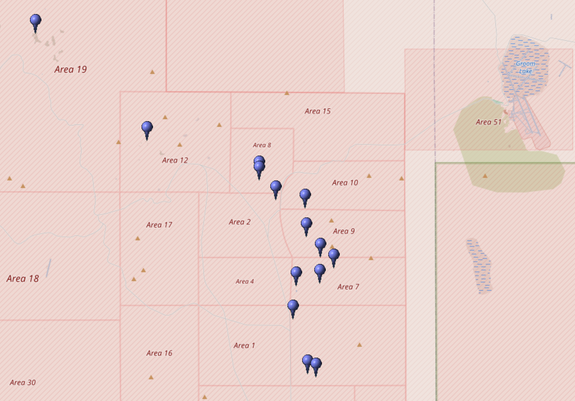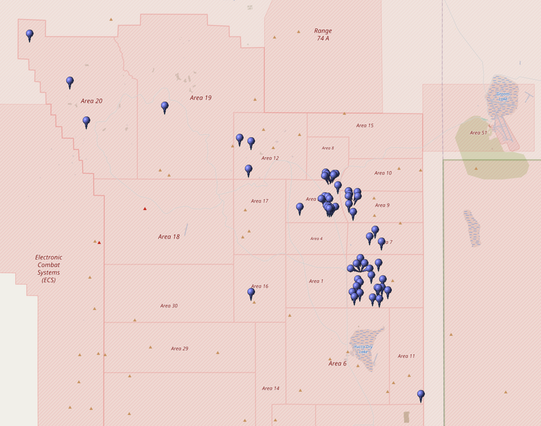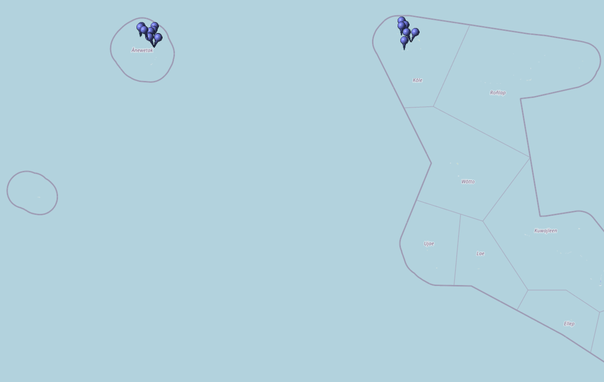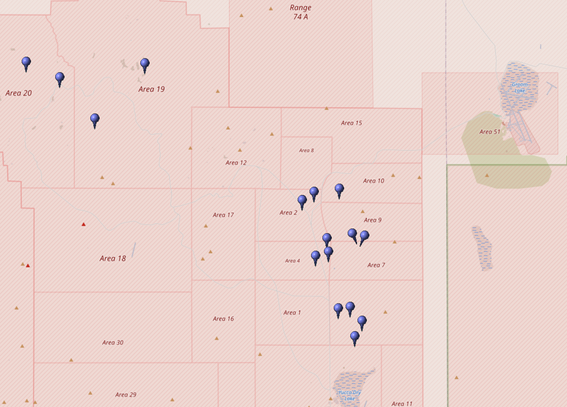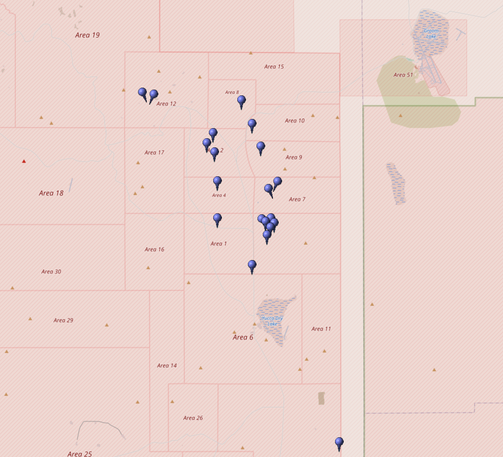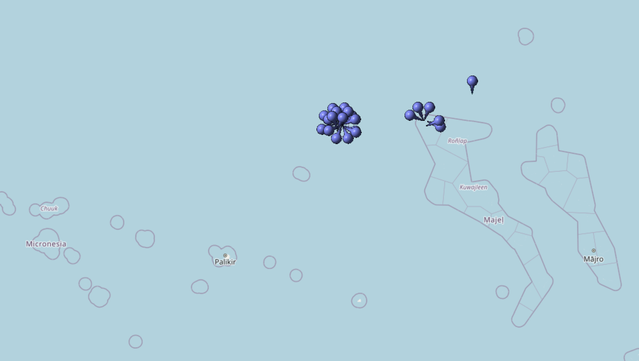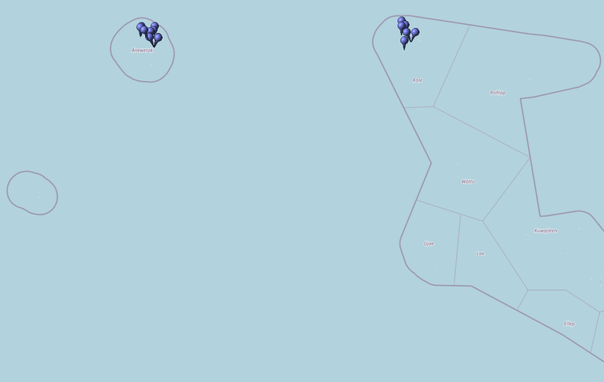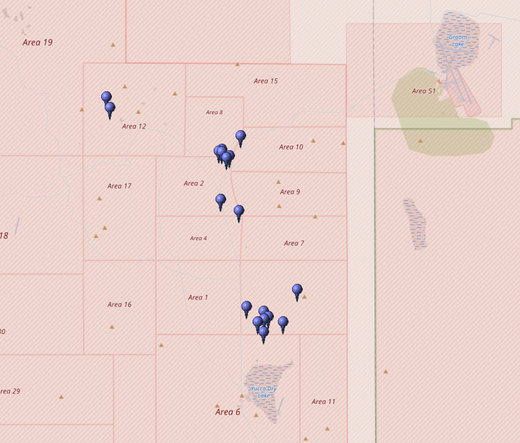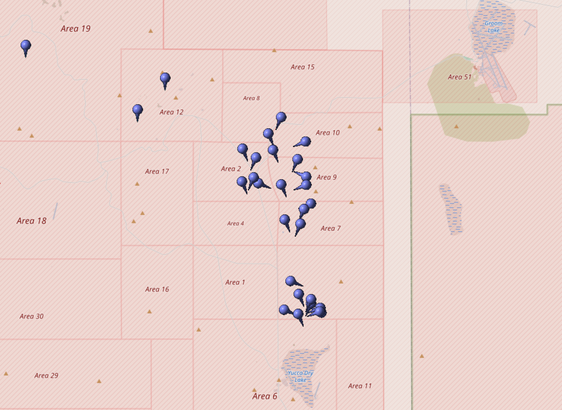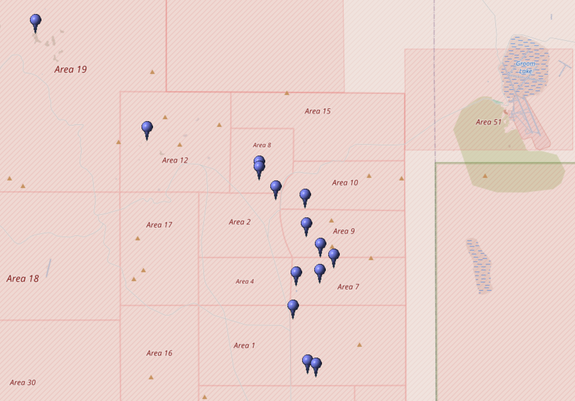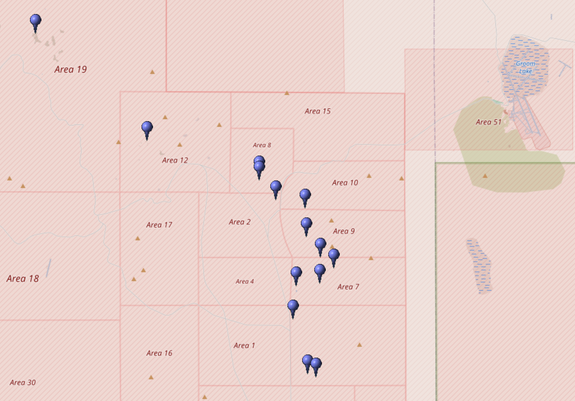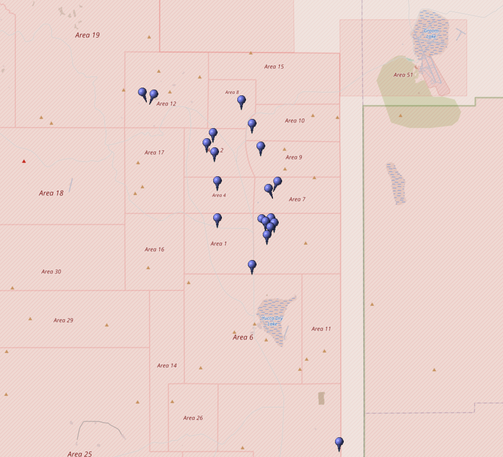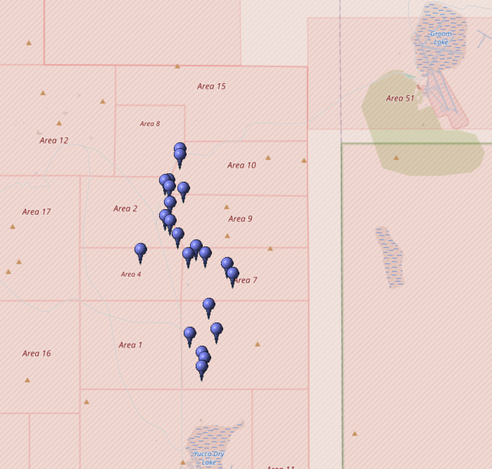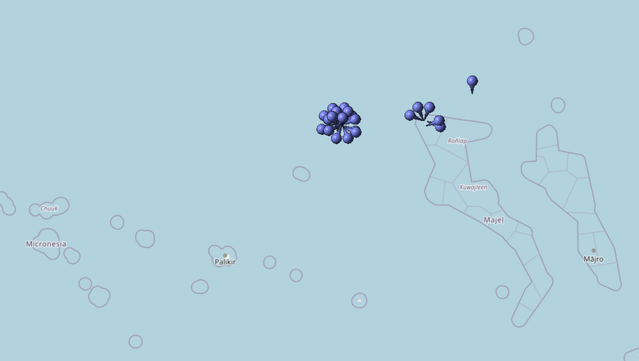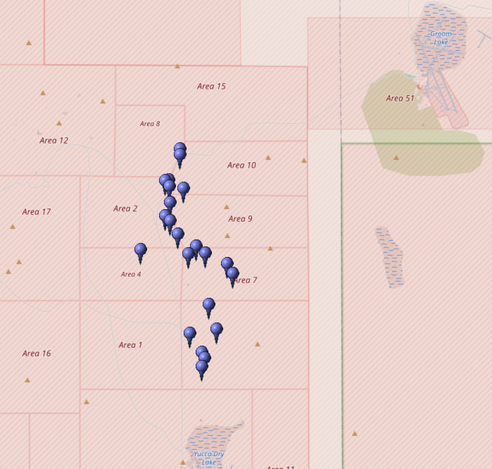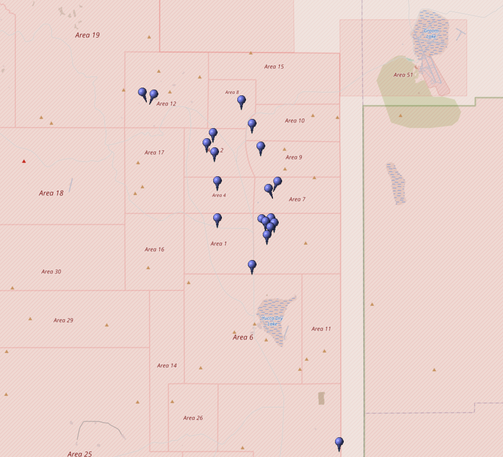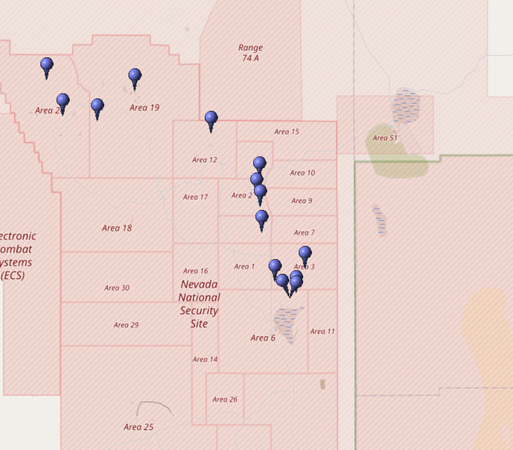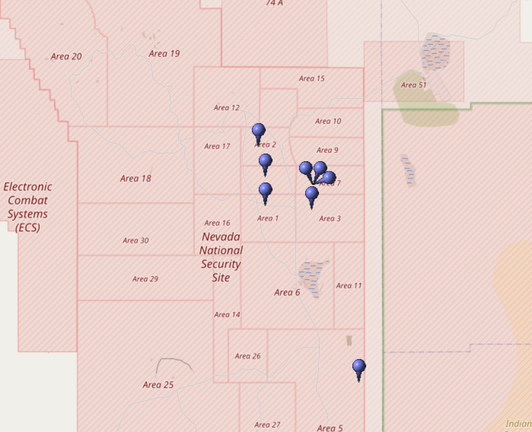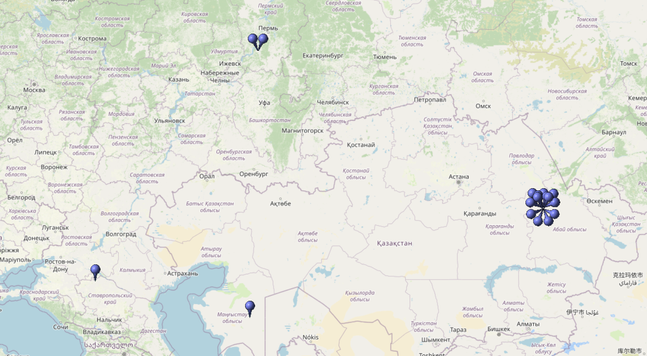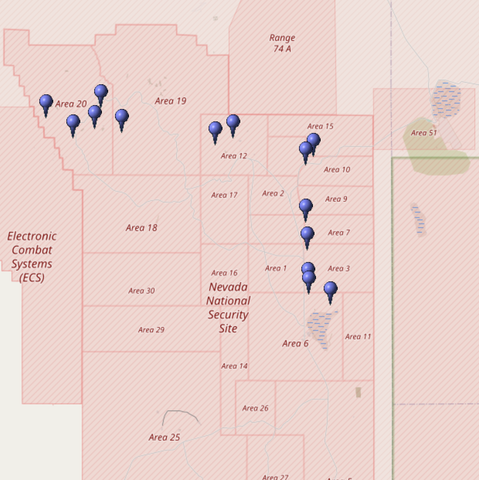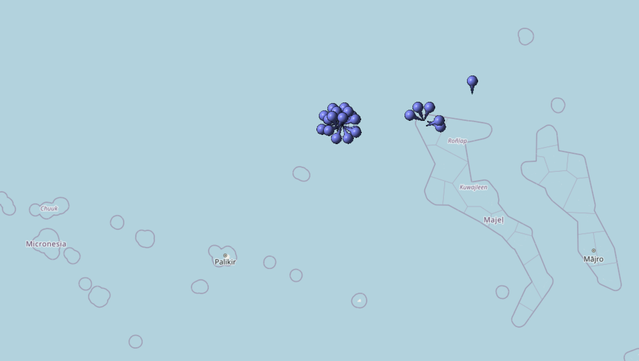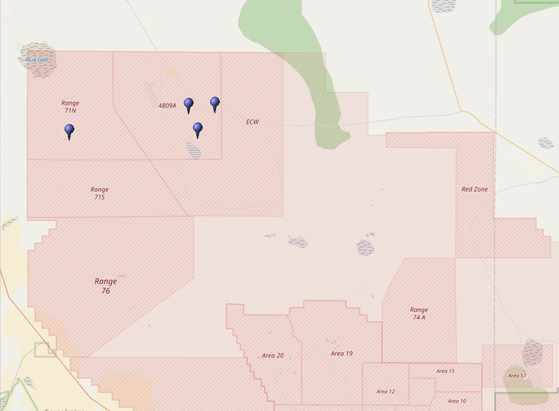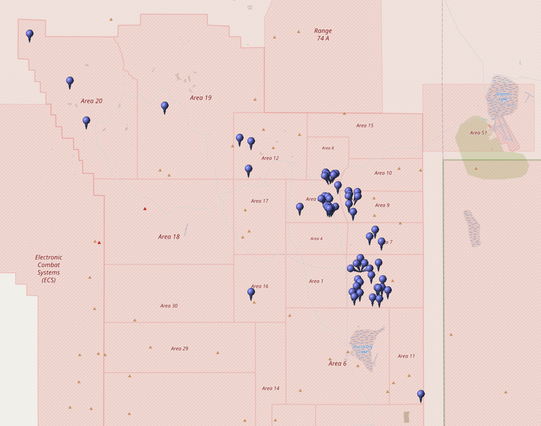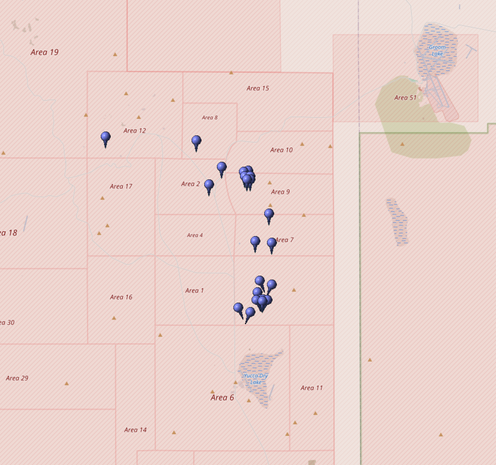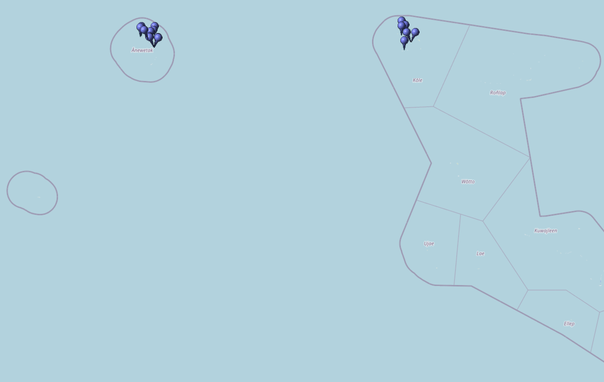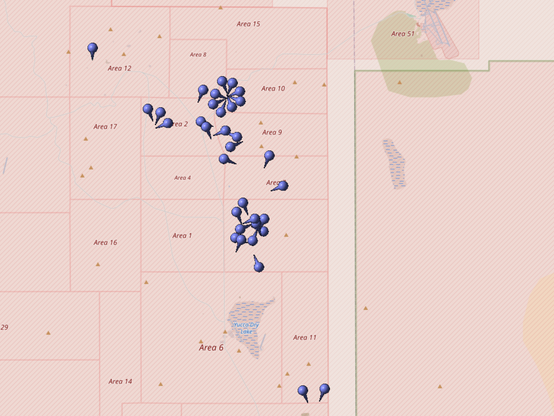2025-06-24 05:12:06
2025-06-24 05:12:06
2025-08-14 10:15:04
https://www.cbc.ca/news/politics/house-of-commons-data-breach-1.7608061
House of Commons hit by cyberattack from 'threat actor': internal email
2025-08-08 08:32:52
Managing, Analyzing and Sharing Research Data with Gen3 Data Commons
Craig Barnes, Kyle Burton, Michael S. Fitzsimons, Hara Prasad Juvvala, Brienna Larrick, Christopher Meyer, Pauline Ribeyre, Ao Liu, Clint Malson, Noah Metoki-Shlubsky, Andrii Prokhorenkov, Jawad Qureshi, Radhika Reddy, L. Philip Schumm, Mingfei Shao, Trevar Simmons, Alexander VanTol, Peter Vassilatos, Aarti Venkat, Robert L. Grossman
2025-06-21 02:34:13
Why AI can't possibly make you more productive; long
#AI and "productivity", some thoughts:
Edit: fixed some typos.
Productivity is a concept that isn't entirely meaningless outside the context of capitalism, but it's a concept that is heavily inflected in a capitalist context. In many uses today it effectively means "how much you can satisfy and/or exceed your boss' expectations." This is not really what it should mean: even in an anarchist utopia, people would care about things like how many shirts they can produce in a week, although in an "I'd like to voluntarily help more people" way rather than an "I need to meet this quota to earn my survival" way. But let's roll with this definition for a second, because it's almost certainly what your boss means when they say "productivity", and understanding that word in a different (even if truer) sense is therefore inherently dangerous.
Accepting "productivity" to mean "satisfying your boss' expectations," I will now claim: the use of generative AI cannot increase your productivity.
Before I dive in, it's imperative to note that the big generative models which most people think of as constituting "AI" today are evil. They are 1: pouring fuel on our burning planet, 2: psychologically strip-mining a class of data laborers who are exploited for their precarity, 3: enclosing, exploiting, and polluting the digital commons, and 4: stealing labor from broad classes of people many of whom are otherwise glad to give that labor away for free provided they get a simple acknowledgement in return. Any of these four "ethical issues" should be enough *alone* to cause everyone to simply not use the technology. These ethical issues are the reason that I do not use generative AI right now, except for in extremely extenuating circumstances. These issues are also convincing for a wide range of people I talk to, from experts to those with no computer science background. So before I launch into a critique of the effectiveness of generative AI, I want to emphasize that such a critique should be entirely unnecessary.
But back to my thesis: generative AI cannot increase your productivity, where "productivity" has been defined as "how much you can satisfy and/or exceed your boss' expectations."
Why? In fact, what the fuck? Every AI booster I've met has claimed the opposite. They've given me personal examples of time saved by using generative AI. Some of them even truly believe this. Sometimes I even believe they saved time without horribly compromising on quality (and often, your boss doesn't care about quality anyways if the lack of quality is hard to measure of doesn't seem likely to impact short-term sales/feedback/revenue). So if generative AI genuinely lets you write more emails in a shorter period of time, or close more tickets, or something else along these lines, how can I say it isn't increasing your ability to meet your boss' expectations?
The problem is simple: your boss' expectations are not a fixed target. Never have been. In virtue of being someone who oversees and pays wages to others under capitalism, your boss' game has always been: pay you less than the worth of your labor, so that they can accumulate profit and thus more capital to remain in charge instead of being forced into working for a wage themselves. Sure, there are layers of management caught in between who aren't fully in this mode, but they are irrelevant to this analysis. It matters not how much you please your manager if your CEO thinks your work is not worth the wages you are being paid. And using AI actively lowers the value of your work relative to your wages.
Why do I say that? It's actually true in several ways. The most obvious: using generative AI lowers the quality of your work, because the work it produces is shot through with errors, and when your job is reduced to proofreading slop, you are bound to tire a bit, relax your diligence, and let some mistakes through. More than you would have if you are actually doing and taking pride in the work. Examples are innumerable and frequent, from journalists to lawyers to programmers, and we laugh at them "haha how stupid to not check whether the books the AI reviewed for you actually existed!" but on a deeper level if we're honest we know we'd eventually make the same mistake ourselves (bonus game: spot the swipe-typing typos I missed in this post; I'm sure there will be some).
But using generative AI also lowers the value of your work in another much more frightening way: in this era of hype, it demonstrates to your boss that you could be replaced by AI. The more you use it, and no matter how much you can see that your human skills are really necessary to correct its mistakes, the more it appears to your boss that they should hire the AI instead of you. Or perhaps retain 10% of the people in roles like yours to manage the AI doing the other 90% of the work. Paradoxically, the *more* you get done in terms of raw output using generative AI, the more it looks to your boss as if there's an opportunity to get enough work done with even fewer expensive humans. Of course, the decision to fire you and lean more heavily into AI isn't really a good one for long-term profits and success, but the modern boss did not get where they are by considering long-term profits. By using AI, you are merely demonstrating your redundancy, and the more you get done with it, the more redundant you seem.
In fact, there's even a third dimension to this: by using generative AI, you're also providing its purveyors with invaluable training data that allows them to make it better at replacing you. It's generally quite shitty right now, but the more use it gets by competent & clever people, the better it can become at the tasks those specific people use it for. Using the currently-popular algorithm family, there are limits to this; I'm not saying it will eventually transcend the mediocrity it's entwined with. But it can absolutely go from underwhelmingly mediocre to almost-reasonably mediocre with the right training data, and data from prompting sessions is both rarer and more useful than the base datasets it's built on.
For all of these reasons, using generative AI in your job is a mistake that will likely lead to your future unemployment. To reiterate, you should already not be using it because it is evil and causes specific and inexcusable harms, but in case like so many you just don't care about those harms, I've just explained to you why for entirely selfish reasons you should not use it.
If you're in a position where your boss is forcing you to use it, my condolences. I suggest leaning into its failures instead of trying to get the most out of it, and as much as possible, showing your boss very clearly how it wastes your time and makes things slower. Also, point out the dangers of legal liability for its mistakes, and make sure your boss is aware of the degree to which any of your AI-eager coworkers are producing low-quality work that harms organizational goals.
Also, if you've read this far and aren't yet of an anarchist mindset, I encourage you to think about the implications of firing 75% of (at least the white-collar) workforce in order to make more profit while fueling the climate crisis and in most cases also propping up dictatorial figureheads in government. When *either* the AI bubble bursts *or* if the techbros get to live out the beginnings of their worker-replacement fantasies, there are going to be an unimaginable number of economically desperate people living in increasingly expensive times. I'm the kind of optimist who thinks that the resulting social crucible, though perhaps through terrible violence, will lead to deep social changes that effectively unseat from power the ultra-rich that continue to drag us all down this destructive path, and I think its worth some thinking now about what you might want the succeeding stable social configuration to look like so you can advocate towards that during points of malleability.
As others have said more eloquently, generative AI *should* be a technology that makes human lives on average easier, and it would be were it developed & controlled by humanists. The only reason that it's not, is that it's developed and controlled by terrible greedy people who use their unfairly hoarded wealth to immiserate the rest of us in order to maintain their dominance. In the long run, for our very survival, we need to depose them, and I look forward to what the term "generative AI" will mean after that finally happens.
2025-07-25 06:05:23
Heute vor 53 Jahren: Am 25.07.1972 zündeten die USA im Rahmen von Operation Toggle die Atombombe "Atarque". Toggle war eine Serie von #Kernwaffentests bei der 72/73 insgesamt 35 Bomben größtenteils im Testgebiet in #Nevada und Rio Blanco unterirdisch gezündet wurden.
2025-07-25 06:05:15
2025-06-27 09:44:00
At its core, #CCSignals is an attempt by Creative Commons, a Silicon Valley-based organisation, to legitimise the AI grifts of its donors – Google, Microsoft, and Meta (Zuckerberg).
Creative Commons was always a thinly-veiled attempt at enabling Big Tech data farmers to get more data (that’s why the whole “open data” realm is so well funded/popular – open as in “open for business” not fre…
2025-08-14 14:03:06
Check out today's Metacurity for the most crucial infosec developments you should know, including
--Russian hackers suspected of sabotaging a dam in Norway,
--Canadian House of Commons is probing a 'significant' data breach,
--North Korean hackers unmasked by leak to ZachXBT,
--Court rules that FCC data breach rules are legal,
--US AG sues Zelle for allegedly enabling scammer fraud,
--UK gov't spent $3.2m to keep Afghan breach secret
--…
2025-07-24 06:25:32
2025-08-14 13:58:22
Hackers reportedly compromise Canadian House of Commons through Microsoft vulnerability https://therecord.media/hackers-compromise-canada-house-of-commons
2025-07-25 06:05:31
Heute vor 40 Jahren: Am 25. Juli 1985 zündeten die #USA im Rahmen von Operation Grenadier die 13. Atombombe "Serena". Grenadier war eine Serie von #Kernwaffentests bei der 1984/85 insgesamt 16 Bomben im Testgebiet in
2025-06-25 05:25:59
2025-07-24 06:25:45
Heute vor 39 Jahren: Am 24. Juli 1986 zündeten die #USA im Rahmen von Operation Charioteer die 13. Atombombe "Cornucopia". Charioteer war eine Serie von #Kernwaffentests bei der 1985/86 insgesamt 16 Bomben im Testgebiet in
2025-06-24 05:11:59
2025-07-17 13:31:49
To add a single example here (feel free to chime in with your own):
Problem: editing code is sometimes tedious because external APIs require boilerplate.
Solutions:
- Use LLM-generated code. Downsides: energy use, code theft, potential for legal liability, makes mistakes, etc. Upsides: popular among some peers, seems easy to use.
- Pick a better library (not always possible).
- Build internal functions to centralize boilerplate code, then use those (benefits: you get a better understanding of the external API, and a more-unit-testable internal code surface; probably less amortized effort).
- Develop a non-LLM system that actually reasons about code at something like the formal semantics level and suggests boilerplate fill-ins based on rules, while foregrounding which rules it's applying so you can see the logic behind the suggestions (needs research).
Obviously LLM use in coding goes beyond this single issue, but there are similar analyses for each potential use of LLMs in coding. I'm all cases there are:
1. Existing practical solutions that require more effort (or in many cases just seem to but are less-effort when amortized).
2. Near-term researchable solutions that directly address the problem and which would be much more desirable in the long term.
Thus in addition to disastrous LLM effects on the climate, on data laborers, and on the digital commons, they tend to suck us into cheap-seeming but ultimately costly design practices while also crowding out better long-term solutions. Next time someone suggests how useful LLMs are for some task, try asking yourself (or them) what an ideal solution for that task would look like, and whether LLM use moves us closer to or father from a world in which that solution exists.
2025-07-27 02:26:52
«Komoot’s core tech of Leaflet map, Graphhopper routing engine, and #OpenStreetMap data are all free, open-source projects. This is in addition to all the open-source web servers, databases, and operating systems that tech companies build upon. They leech off the open-source commons»
I'm convinced that this is one of the big reasons why we need some form of @… sooner rather than later, to ensure our commons can be saved from corp capture.
2025-08-23 06:34:37
2025-08-23 06:34:46
Heute vor 37 Jahren: Am 23.08.1988 zündeten die #USA im Rahmen von Operation Touchstone die Atombomben "Harlingen" 1 & 2. Touchstone war eine Serie von #Kernwaffentests bei der 1987/88 15 Bomben im Testgebiet in
2025-07-05 15:47:25
You're not being forced to use AI because your boss thinks it will make you more productive. You're being forced to use AI because either your boss is invested in the AI hype and wants to drive usage numbers up, or because your boss needs training data from your specific role so they can eventually replace you with an AI, or both.
Either way, it's not in your interests to actually use it, which is convenient, because using it is also harmful in 4-5 different ways (briefly: resource overuse, data laborer abuse, commons abuse, psychological hazard, bubble inflation, etc.)
#AI
2025-07-22 04:59:55
Heute vor 67 Jahren: Am 22.07.1958 kam es bei Enewetak zum Atomtest Operation Hardtack I, "Olive". Dieser Test war Teil einer Serie von 35 #Atomtests, die die USA im Sommer 1958 auf den #Marshallinseln im Pazifik durchführten.
2025-07-22 04:59:52
Heute vor 67 Jahren: Am 22.07.1958 kam es bei Enewetak zum Atomtest Operation Hardtack I, "Juniper". Dieser Test war Teil einer Serie von 35 #Atomtests, die die USA im Sommer 1958 auf den #Marshallinseln im Pazifik durchführten.
2025-06-22 06:03:32
Heute vor 58 Jahren: Am 22. Juni 1967 testen die #USA die Atombombe "Switch". Die Operation #Latchkey war eine Serie von 38 US-amerikanischen #Kernwaffentests, die 1966/67 auf der Nevada …
2025-06-22 06:03:35
Heute vor 37 Jahren: Am 22.06.1988 zündeten die #USA im Rahmen von Operation Touchstone die Atombomben "Nightingale" & "Rhyolite". Touchstone war eine Serie von #Kernwaffentests bei der 1987/88 15 Bomben im Testgebiet in
2025-08-04 15:49:00
Should we teach vibe coding? Here's why not.
Should AI coding be taught in undergrad CS education?
1/2
I teach undergraduate computer science labs, including for intro and more-advanced core courses. I don't publish (non-negligible) scholarly work in the area, but I've got years of craft expertise in course design, and I do follow the academic literature to some degree. In other words, In not the world's leading expert, but I have spent a lot of time thinking about course design, and consider myself competent at it, with plenty of direct experience in what knowledge & skills I can expect from students as they move through the curriculum.
I'm also strongly against most uses of what's called "AI" these days (specifically, generative deep neutral networks as supplied by our current cadre of techbro). There are a surprising number of completely orthogonal reasons to oppose the use of these systems, and a very limited number of reasonable exceptions (overcoming accessibility barriers is an example). On the grounds of environmental and digital-commons-pollution costs alone, using specifically the largest/newest models is unethical in most cases.
But as any good teacher should, I constantly question these evaluations, because I worry about the impact on my students should I eschew teaching relevant tech for bad reasons (and even for his reasons). I also want to make my reasoning clear to students, who should absolutely question me on this. That inspired me to ask a simple question: ignoring for one moment the ethical objections (which we shouldn't, of course; they're very stark), at what level in the CS major could I expect to teach a course about programming with AI assistance, and expect students to succeed at a more technically demanding final project than a course at the same level where students were banned from using AI? In other words, at what level would I expect students to actually benefit from AI coding "assistance?"
To be clear, I'm assuming that students aren't using AI in other aspects of coursework: the topic of using AI to "help you study" is a separate one (TL;DR it's gross value is not negative, but it's mostly not worth the harm to your metacognitive abilities, which AI-induced changes to the digital commons are making more important than ever).
So what's my answer to this question?
If I'm being incredibly optimistic, senior year. Slightly less optimistic, second year of a masters program. Realistic? Maybe never.
The interesting bit for you-the-reader is: why is this my answer? (Especially given that students would probably self-report significant gains at lower levels.) To start with, [this paper where experienced developers thought that AI assistance sped up their work on real tasks when in fact it slowed it down] (https://arxiv.org/abs/2507.09089) is informative. There are a lot of differences in task between experienced devs solving real bugs and students working on a class project, but it's important to understand that we shouldn't have a baseline expectation that AI coding "assistants" will speed things up in the best of circumstances, and we shouldn't trust self-reports of productivity (or the AI hype machine in general).
Now we might imagine that coding assistants will be better at helping with a student project than at helping with fixing bugs in open-source software, since it's a much easier task. For many programming assignments that have a fixed answer, we know that many AI assistants can just spit out a solution based on prompting them with the problem description (there's another elephant in the room here to do with learning outcomes regardless of project success, but we'll ignore this over too, my focus here is on project complexity reach, not learning outcomes). My question is about more open-ended projects, not assignments with an expected answer. Here's a second study (by one of my colleagues) about novices using AI assistance for programming tasks. It showcases how difficult it is to use AI tools well, and some of these stumbling blocks that novices in particular face.
But what about intermediate students? Might there be some level where the AI is helpful because the task is still relatively simple and the students are good enough to handle it? The problem with this is that as task complexity increases, so does the likelihood of the AI generating (or copying) code that uses more complex constructs which a student doesn't understand. Let's say I have second year students writing interactive websites with JavaScript. Without a lot of care that those students don't know how to deploy, the AI is likely to suggest code that depends on several different frameworks, from React to JQuery, without actually setting up or including those frameworks, and of course three students would be way out of their depth trying to do that. This is a general problem: each programming class carefully limits the specific code frameworks and constructs it expects students to know based on the material it covers. There is no feasible way to limit an AI assistant to a fixed set of constructs or frameworks, using current designs. There are alternate designs where this would be possible (like AI search through adaptation from a controlled library of snippets) but those would be entirely different tools.
So what happens on a sizeable class project where the AI has dropped in buggy code, especially if it uses code constructs the students don't understand? Best case, they understand that they don't understand and re-prompt, or ask for help from an instructor or TA quickly who helps them get rid of the stuff they don't understand and re-prompt or manually add stuff they do. Average case: they waste several hours and/or sweep the bugs partly under the rug, resulting in a project with significant defects. Students in their second and even third years of a CS major still have a lot to learn about debugging, and usually have significant gaps in their knowledge of even their most comfortable programming language. I do think regardless of AI we as teachers need to get better at teaching debugging skills, but the knowledge gaps are inevitable because there's just too much to know. In Python, for example, the LLM is going to spit out yields, async functions, try/finally, maybe even something like a while/else, or with recent training data, the walrus operator. I can't expect even a fraction of 3rd year students who have worked with Python since their first year to know about all these things, and based on how students approach projects where they have studied all the relevant constructs but have forgotten some, I'm not optimistic seeing these things will magically become learning opportunities. Student projects are better off working with a limited subset of full programming languages that the students have actually learned, and using AI coding assistants as currently designed makes this impossible. Beyond that, even when the "assistant" just introduces bugs using syntax the students understand, even through their 4th year many students struggle to understand the operation of moderately complex code they've written themselves, let alone written by someone else. Having access to an AI that will confidently offer incorrect explanations for bugs will make this worse.
To be sure a small minority of students will be able to overcome these problems, but that minority is the group that has a good grasp of the fundamentals and has broadened their knowledge through self-study, which earlier AI-reliant classes would make less likely to happen. In any case, I care about the average student, since we already have plenty of stuff about our institutions that makes life easier for a favored few while being worse for the average student (note that our construction of that favored few as the "good" students is a large part of this problem).
To summarize: because AI assistants introduce excess code complexity and difficult-to-debug bugs, they'll slow down rather than speed up project progress for the average student on moderately complex projects. On a fixed deadline, they'll result in worse projects, or necessitate less ambitious project scoping to ensure adequate completion, and I expect this remains broadly true through 4-6 years of study in most programs (don't take this as an endorsement of AI "assistants" for masters students; we've ignored a lot of other problems along the way).
There's a related problem: solving open-ended project assignments well ultimately depends on deeply understanding the problem, and AI "assistants" allow students to put a lot of code in their file without spending much time thinking about the problem or building an understanding of it. This is awful for learning outcomes, but also bad for project success. Getting students to see the value of thinking deeply about a problem is a thorny pedagogical puzzle at the best of times, and allowing the use of AI "assistants" makes the problem much much worse. This is another area I hope to see (or even drive) pedagogical improvement in, for what it's worth.
1/2
2025-06-21 07:00:09
2025-06-21 07:00:17
Heute vor 52 Jahren: Am 21.06.1973 zündeten die USA im Rahmen von Operation Toggle die Atombombe "Potrillo". Toggle war eine Serie von #Kernwaffentests bei der 72/73 insgesamt 35 Bomben größtenteils im Testgebiet in #Nevada und Rio Blanco unterirdisch gezündet wurden.
2025-07-30 17:56:35
Just read this post by @… on an optimistic AGI future, and while it had some interesting and worthwhile ideas, it's also in my opinion dangerously misguided, and plays into the current AGI hype in a harmful way.
https://social.coop/@eloquence/114940607434005478
My criticisms include:
- Current LLM technology has many layers, but the biggest most capable models are all tied to corporate datacenters and require inordinate amounts of every and water use to run. Trying to use these tools to bring about a post-scarcity economy will burn up the planet. We urgently need more-capable but also vastly more efficient AI technologies if we want to use AI for a post-scarcity economy, and we are *not* nearly on the verge of this despite what the big companies pushing LLMs want us to think.
- I can see that permacommons.org claims a small level of expenses on AI equates to low climate impact. However, given current deep subsidies on place by the big companies to attract users, that isn't a great assumption. The fact that their FAQ dodges the question about which AI systems they use isn't a great look.
- These systems are not free in the same way that Wikipedia or open-source software is. To run your own model you need a data harvesting & cleaning operation that costs millions of dollars minimum, and then you need millions of dollars worth of storage & compute to train & host the models. Right now, big corporations are trying to compete for market share by heavily subsidizing these things, but it you go along with that, you become dependent on them, and you'll be screwed when they jack up the price to a profitable level later. I'd love to see open dataset initiatives SBD the like, and there are some of these things, but not enough yet, and many of the initiatives focus on one problem while ignoring others (fine for research but not the basis for a society yet).
- Between the environmental impacts, the horrible labor conditions and undercompensation of data workers who filter the big datasets, and the impacts of both AI scrapers and AI commons pollution, the developers of the most popular & effective LLMs have a lot of answer for. This project only really mentions environmental impacts, which makes me think that they're not serious about ethics, which in turn makes me distrustful of the whole enterprise.
- Their language also ends up encouraging AI use broadly while totally ignoring several entire classes of harm, so they're effectively contributing to AI hype, especially with such casual talk of AGI and robotics as if embodied AGI were just around the corner. To be clear about this point: we are several breakthroughs away from AGI under the most optimistic assumptions, and giving the impression that those will happen soon plays directly into the hands of the Sam Altmans of the world who are trying to make money off the impression of impending huge advances in AI capabilities. Adding to the AI hype is irresponsible.
- I've got a more philosophical criticism that I'll post about separately.
I do think that the idea of using AI & other software tools, possibly along with robotics and funded by many local cooperatives, in order to make businesses obsolete before they can do the same to all workers, is a good one. Get your local library to buy a knitting machine alongside their 3D printer.
Lately I've felt too busy criticizing AI to really sit down and think about what I do want the future to look like, even though I'm a big proponent of positive visions for the future as a force multiplier for criticism, and this article is inspiring to me in that regard, even if the specific project doesn't seem like a good one.
2025-07-20 13:12:51
2025-07-20 13:12:59
Heute vor 53 Jahren: Am 20.07.1972 zündeten die USA im Rahmen von Operation Toggle die Atombombe "Diamond Sculls". Toggle war eine Serie von #Kernwaffentests bei der 72/73 insgesamt 35 Bomben größtenteils im Testgebiet in #Nevada und Rio Blanco unterirdisch gezündet wurden.
2025-06-20 06:01:19
Heute vor 38 Jahren: Am 20.06.1987 zündeten die #USA im Rahmen von Operation Musketeer die Atombombe "Mission Ghost". Musketeer war eine Serie von #Kernwaffentests bei der 1986/87 insgesamt 16 Bomben im Testgebiet in
2025-08-04 15:49:39
Should we teach vibe coding? Here's why not.
2/2
To address the bigger question I started with ("should we teach AI-"assisted" coding?"), my answer is: "No, except enough to show students directly what its pitfalls are." We have little enough time as it is to cover the core knowledge that they'll need, which has become more urgent now that they're going to be expected to clean up AI bugs and they'll have less time to develop an understanding of the problems they're supposed to be solving. The skill of prompt engineering & other skills of working with AI are relatively easy to pick up on your own, given a decent not-even-mathematical understanding of how a neutral network works, which is something we should be giving to all students, not just our majors.
Reasonable learning objectives for CS majors might include explaining what types of bugs an AI "assistant" is most likely to introduce, explaining the difference between software engineering and writing code, explaining why using an AI "assistant" is likely to violate open-source licenses, listing at lest three independent ethical objections to contemporary LLMs and explaining the evidence for/reasoning behind them, explaining why we should expect AI "assistants" to be better at generating code from scratch than at fixing bugs in existing code (and why they'll confidently "claim" to have fixed problems they haven't), and even fixing bugs in AI generated code (without AI "assistance").
If we lived in a world where the underlying environmental, labor, and data commons issues with AI weren't as bad, or if we could find and use systems that effectively mitigate these issues (there's lots of piecemeal progress on several of these) then we should probably start teaching an elective on coding with an assistant to students who have mastered programming basics, but such a class should probably spend a good chunk of time on non-assisted debugging.
#AI #LLMs #VibeCoding
2025-06-20 06:01:10
Heute vor 46 Jahren: Am 20.06.1979 zündeten die #USA im Rahmen von Operation Quicksilver die 10. Atombombe "Chess". Quicksilver war eine Serie von #Kernwaffentests bei der 1978/79 insgesamt 16 Bomben im Testgebiet in
2025-07-19 06:59:02
2025-06-19 18:51:34
2025-06-19 18:51:40
Heute vor 33 Jahren: Am 19. Juni 1992 zündeten die #USA im Rahmen von Operation Julin die 4. Atombombe "Victoria". Julin war eine Serie von #Kernwaffentests bei der 1991/92 insgesamt 9 Bomben im Testgebiet in
2025-06-19 18:51:37
Heute vor 50 Jahren: Am 19. Juni 1975 testen die #USA die Atombombe "Mast". Die Operation Bedrock war eine Serie von 27 US-amerikanischen #Kernwaffentests, die 1974/75 auf der Nevada Test Site in Nevada unterirdisch durchgeführt wurde.
2025-08-18 05:28:23
Heute vor 67 Jahren: Am 06.08.1958 kam es bei Enewetak zum Atomtest Operation Hardtack I, "Quince". Dieser Test war Teil einer Serie von 35 #Atomtests, die die USA im Sommer 1958 auf den #Marshallinseln im Pazifik durchführten.
2025-08-18 05:28:20
2025-07-18 04:25:57
Heute vor 51 Jahren: Am 18 Juli 1974 testen die #USA simultan die Atombomben "Crestlake-Briar" u. "Crestlake-Tansan". Die Operation Bedrock war eine Serie von 27 US-amerikanischen #Kernwaffentests, die 1974/75 auf der Nevada Test Site in Nevada unterirdisch durchgeführt wurde…
2025-08-17 08:46:44
Heute vor 40 Jahren: Am 17. August 1985 zündeten die #USA im Rahmen von Operation Grenadier die 15. Atombombe "Chamita". Grenadier war eine Serie von #Kernwaffentests bei der 1984/85 insgesamt 16 Bomben im Testgebiet in
2025-08-17 08:46:47
Heute vor 37 Jahren: Am 17.08.1988 zündeten die #USA im Rahmen von Operation Touchstone die 12. Atombombe "Kearsarge". Touchstone war eine Serie von #Kernwaffentests bei der 1987/88 insgesamt 15 Bomben im Testgebiet in
2025-07-17 04:59:16
Heute vor 67 Jahren: Am 17.07.1958 kam es bei Enewetak zum Atomtest Operation Hardtack I, "Pisonia". Dieser Test war Teil einer Serie von 35 #Atomtests, die die USA im Sommer 1958 auf den #Marshallinseln im Pazifik durchführten.
2025-07-17 04:59:23
Heute vor 57 Jahren: Am 17. Juli 1968 zündeten die #USA im Rahmen von Operation Bowline die Atombombe "Spud". Bowline war eine Serie von #Kernwaffentests bei der 68/69 insgesamt 58 Bomben im Testgebiet in #Nevada
2025-07-17 04:59:26
Heute vor 39 Jahren: Am 17. Juli 1986 zündeten die #USA im Rahmen von Operation Charioteer die 12. Atombombe "Cybar". Charioteer war eine Serie von #Kernwaffentests bei der 1985/86 insgesamt 16 Bomben im Testgebiet in
2025-08-16 07:06:31
Heute vor 48 Jahren: Am 16. August 1977 zündeten die #USA im Rahmen von Operation Fulcrum die 20. Atombombe "Flotost". Fulcrum war eine Serie von #Kernwaffentests bei der 1976/77 insgesamt 24 Bomben im Testgebiet in
2025-06-16 05:57:19
2025-07-16 11:31:38
Heute vor 56 Jahren: Am 16. Juli 1969 testen die #USA die Atombombe "Ildrim". Operation Mandrel war eine Serie von 53 US-amerikanischen #Kernwaffentests, die 1969 und 1970 hauptsächlich auf der Nevada Test Site in Nevada unterirdisch durchgeführt wurde.
2025-07-16 11:31:45
Heute vor 44 Jahren: Am 16. Juli 1981 testen die #USA die #Atombombe "Pineau". Die Operation #Guardian war eine Serie von 14 US-amerikanischen
2025-06-16 05:57:00
2025-06-16 05:57:24
Heute vor 43 Jahren: Am 16. Juni 1982 testen die #USA die Atombombe "Kesti". Die Operation #Praetorian war eine Serie von 20 US-amerikanischen #Kernwaffentests, die 1981/82 auf der Neva…
2025-08-14 06:48:11
Heute vor 51 Jahren: Am 14 August 1974 testen die #USA die Atombombe "Puye". Die Operation Bedrock war eine Serie von 27 US-amerikanischen #Kernwaffentests, die 1974/75 auf der Nevada Test Site in Nevada unterirdisch durchgeführt wurde.
2025-08-14 06:48:03
Heute vor 56 Jahren: Am 14. August 1969 testen die #USA zwei Atombomben "Spider-1" und "Spider-2". Operation Mandrel war eine Serie von 53 US-amerikanischen #Kernwaffentests, die 1969/70 hauptsächlich auf der Nevada Test Site in Nevada unterirdisch durchgeführt wurde.
2025-08-14 06:48:07
Heute vor 56 Jahren: Am 14. August 1969 testen die #USA simultan die Atombomben "Spider-1" u. "Spider-2". Operation Mandrel war eine Serie von 53 US-amerikanischen #Kernwaffentests, die 1969/70 hauptsächlich auf der Nevada Test Site in Nevada unterirdisch durchgeführt wurde.
2025-08-14 06:48:14
Heute vor 40 Jahren: Am 14. August 1985 zündeten die #USA im Rahmen von Operation Grenadier die 14. Atombombe "Cebrero". Grenadier war eine Serie von #Kernwaffentests bei der 1984/85 insgesamt 16 Bomben im Testgebiet in
2025-07-14 06:10:30
Heute vor 67 Jahren: Am 14.07.1958 kam es bei Enewetak zum Atomtest Operation Hardtack I, "Scaevola". Dieser Test war Teil einer Serie von 35 #Atomtests, die die USA im Sommer 1958 auf den #Marshallinseln im Pazifik durchführten.
2025-06-14 06:41:19
Heute vor 67 Jahren: Am 14.06.1958 kam es bei Enewetak zum Atomtest Operation Hardtack I, "Walnut". Dieser Test war Teil einer Serie von 35 #Atomtests, die die USA im Sommer 1958 auf den #Marshallinseln im Pazifik durchführten.
2025-06-14 06:41:16
Heute vor 67 Jahren: Am 14.06.1958 kam es bei Enewetak zum Atomtest Operation Hardtack I, "Aspen". Dieser Test war Teil einer Serie von 35 #Atomtests, die die USA im Sommer 1958 auf den #Marshallinseln im Pazifik durchführten.
2025-06-13 06:20:10
2025-07-12 04:36:19
Heute vor 67 Jahren: Am 12.07.1958 kam es bei Enewetak zum Atomtest Operation Hardtack I, "Poplar". Dieser Test war Teil einer Serie von 35 #Atomtests, die die USA im Sommer 1958 auf den #Marshallinseln im Pazifik durchführten.
2025-07-12 04:36:23
Heute vor 47 Jahren: Am 12.07.1978 zündeten die #USA im Rahmen von Operation Cresset die 17. Atombombe "Lowball". Cresset war eine Serie von #Kernwaffentests bei der 1977/78 insgesamt 23 Bomben im Testgebiet in
2025-08-12 04:08:45
Heute vor 67 Jahren: Am 12.08.1958 kam es bei Enewetak zum Atomtest Operation Hardtack I, "Orange". Dieser Test war Teil einer Serie von 35 #Atomtests, die die USA im Sommer 1958 auf den #Marshallinseln im Pazifik durchführten.
2025-08-11 05:23:35
Heute vor 42 Jahren: Am 11.08.1983 zündeten die #USA im Rahmen von Operation Phalanx die 12. Atombombe "Sabado". Phalanx war eine Serie von #Kernwaffentests bei der 1982/83 insgesamt 19 Bomben größtenteils im Testgebiet in
2025-07-11 05:44:06
2025-06-11 05:29:13
2025-06-11 05:29:10
2025-06-11 05:29:45
Heute vor 46 Jahren: Am 11.06.1979 zündeten die #USA im Rahmen von Operation Quicksilver die 9. Atombombe "Pepato". Quicksilver war eine Serie von #Kernwaffentests bei der 1978/79 insgesamt 16 Bomben im Testgebiet in
2025-06-11 05:29:42
Heute vor 50 Jahren: Am 11. Juni 1975 testen die #USA die Atombombe "Alviso". Die Operation Bedrock war eine Serie von 27 US-amerikanischen #Kernwaffentests, die 1974/75 auf der Nevada Test Site in Nevada unterirdisch durchgeführt wurde.
2025-07-10 05:58:38
2025-07-10 05:58:41
Heute vor 51 Jahren: Am 10 Juli 1974 testen die #USA die Atombombe "Escabosa". Die Operation Bedrock war eine Serie von 27 US-amerikanischen #Kernwaffentests, die 1974/75 auf der Nevada Test Site in Nevada unterirdisch durchgeführt wurde.
2025-07-10 05:58:45
Heute vor 44 Jahren: Am 10. Juli 1981 testen die #USA die #Atombombe "Niza". Die Operation #Guardian war eine Serie von 14 US-amerikanischen
2025-06-10 07:17:59
2025-06-10 07:17:56
Heute vor 67 Jahren: Am 10.06.1958 kam es bei Enewetak zum Atomtest Operation Hardtack I, "Maple". Dieser Test war Teil einer Serie von 35 #Atomtests, die die USA im Sommer 1958 auf den #Marshallinseln im Pazifik durchführten.
2025-08-09 06:55:20
Heute vor 57 Jahren: Am 9. August 1968 zündeten die #USA im Rahmen von Operation Bowline die Atombombe "Imp". Bowline war eine Serie von #Kernwaffentests bei der 68/69 insgesamt 58 Bomben im Testgebiet in #Nevada
2025-07-08 04:54:21
2025-08-08 07:23:10
Heute vor 46 Jahren: Am 08.08.1979 zündeten die #USA im Rahmen von Operation Quicksilver die 13. Atombombe "Offshore". Quicksilver war eine Serie von #Kernwaffentests bei der 1978/79 insgesamt 16 Bomben im Testgebiet in
2025-08-07 05:39:50
2025-08-06 06:01:11
Heute vor 67 Jahren: Am 18.08.1958 kam es bei Enewetak zum Atomtest Operation Hardtack I, "Fig". Dieser Test war Teil einer Serie von 35 #Atomtests, die die USA im Sommer 1958 auf den #Marshallinseln im Pazifik durchführten.
2025-06-06 05:23:09
2025-06-06 05:23:53
2025-06-06 05:23:49
Heute vor 52 Jahren: Am 06.06.1973 zündeten die USA im Rahmen von Operation Toggle die Atombombe "Almendro". Toggle war eine Serie von #Kernwaffentests bei der 72/73 insgesamt 35 Bomben größtenteils im Testgebiet in #Nevada und Rio Blanco unterirdisch gezündet wurden.
2025-06-06 05:23:57
Heute vor 44 Jahren: Am 6. Juni 1981 testen die #USA die #Atombombe "Harzer". Die Operation #Guardian war eine Serie von 14 US-amerikanischen
2025-08-05 07:46:08
Heute vor 44 Jahren: Am 5. August 1981 testen die #USA die #Atombombe "Havarti". Die Operation #Guardian war eine Serie von 14 US-amerikanischen
2025-07-05 06:29:44
2025-08-04 06:37:52
Heute vor 48 Jahren: Am 4. August 1977 zündeten die #USA im Rahmen von Operation Fulcrum die 17. Atombombe "Strake". Fulcrum war eine Serie von #Kernwaffentests bei der 1976/77 insgesamt 24 Bomben im Testgebiet in
2025-06-04 07:25:01
2025-06-02 05:13:38
Heute vor 67 Jahren: Am 02.06.1958 kam es bei Enewetak zum Atomtest Operation Hardtack I, "Rose". Dieser Test war Teil einer Serie von 35 #Atomtests, die die USA im Sommer 1958 auf den #Marshallinseln im Pazifik durchführten.
2025-06-02 05:13:51
Heute vor 48 Jahren: Am 2. Juni 1977 zündeten die #USA im Rahmen von Operation Fulcrum die 15. Atombombe "Forefoot". Fulcrum war eine Serie von #Kernwaffentests bei der 1976/77 insgesamt 24 Bomben im Testgebiet in
2025-06-02 05:13:34
2025-06-02 05:13:54
Heute vor 37 Jahren: Am 02.06.1988 zündeten die #USA im Rahmen von Operation Touchstone die 8. Atombombe "Comstock". Touchstone war eine Serie von #Kernwaffentests bei der 1987/88 insgesamt 15 Bomben im Testgebiet in
2025-06-01 06:52:24
Heute vor 73 Jahren: Am 1. Juni 1952 wurde "George", ein Teil der Operation Tumbler–Snapper, auf dem Nevada Testgelände durchgeführt. Ziel war es, die #Einleitungskurve und Ausbeute von #Kernwaffen zu testen. Insgesamt kam es während dieser Operation zu 8
2025-05-31 07:50:42
Heute vor 56 Jahren: Am 31. Mai 1969 führten die #UDSSR in Sary-Uzen/Murzhik, Semipalatinsk, Kazakhstan den 301. #Atomtest durch. Er diente der #Waffenentwicklung und fand unterirdisch (Tunnel/…
2025-07-31 06:08:34
Heute vor 67 Jahren: Am 31.07.1958 wurde der Teak-Test (Operation #Hardtack I) auf Johnston Island durchgeführt. Eine 3,8 Mt Bombe explodierte in 76 km Höhe, verursachte sichtbare Effekte bis nach Hawaii und Kommunikationsstörungen im Pazifik. Crew & Tiere waren teils betroffen.
2025-06-30 06:15:07
Heute vor 38 Jahren: Am 30.06.1987 zündeten die #USA im Rahmen von Operation Musketeer die Atombombe "Panchuela". Musketeer war eine Serie von #Kernwaffentests bei der 1986/87 insgesamt 16 Bomben im Testgebiet in
2025-05-31 07:50:34
Heute vor 67 Jahren: Am 31.05.1958 kam es bei Enewetak zum Atomtest Operation Hardtack I, "Sycamore". Dieser Test war Teil einer Serie von 35 #Atomtests, die die USA im Sommer 1958 auf den #Marshallinseln im Pazifik durchführten.
2025-05-31 07:50:37
Heute vor 62 Jahren: Am 31. Mai 1963 kam es zum Test "Clean Slate II", Teil der Operation Roller Coaster, eine Serie von 4 US-UK-Tests im Nevada Test Site, die die Verteilung radioaktiver Partikel und deren Eindämmung in einem "Dirty #Bomb"-Szenario untersuchten.
2025-07-30 06:08:31
Heute vor 57 Jahren: Am 30. Juli 1968 zündeten die #USA im Rahmen von Operation Bowline die Atombombe "Tanya". Bowline war eine Serie von #Kernwaffentests bei der 68/69 insgesamt 58 Bomben im Testgebiet in #Nevada
2025-06-29 14:16:18
2025-05-30 06:16:41
2025-06-29 14:16:10
Heute vor 67 Jahren: Am 29.06.1958 kam es bei Enewetak zum Atomtest Operation Hardtack I, "Hickory". Dieser Test war Teil einer Serie von 35 #Atomtests, die die USA im Sommer 1958 auf den #Marshallinseln im Pazifik durchführten.
2025-06-29 14:16:14
Heute vor 58 Jahren: Am 29. Juni 1967 testen die #USA die Atombombe "Umber". Die Operation #Latchkey war eine Serie von 38 US-amerikanischen #Kernwaffentests, die 1966/67 auf der Nevada T…
